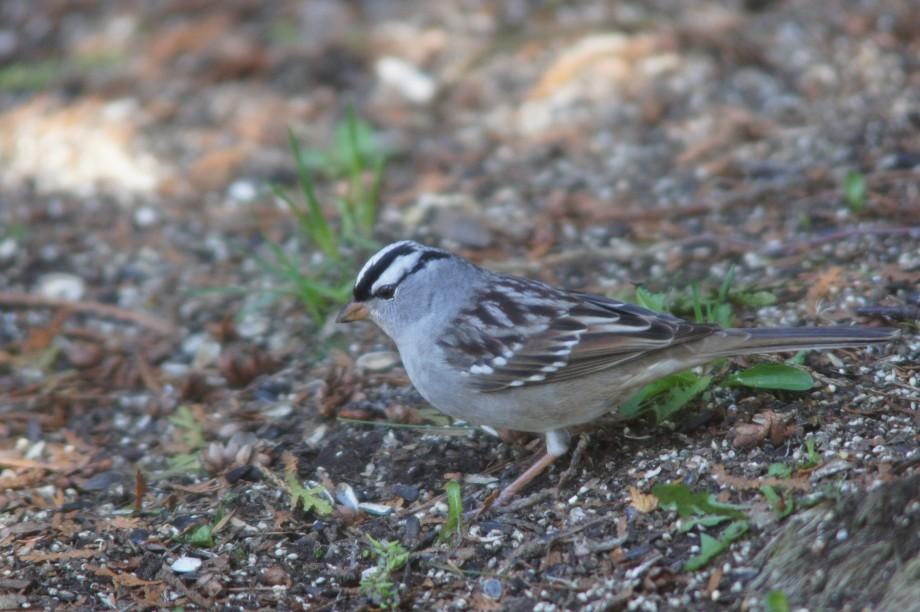While spring migration in the Adirondacks begins as a trickle in March and then grows through April, May is marked on the calendar of every birdwatcher in the North Country. They have waited through the cold and often quiet winter for this time of year when a windfall of migratory landbirds arrive enmass to the Adirondacks. Birds suddenly fill the woods and yards, just as they fill birders with joy. Many of these species will stay and breed for the summer, while others just pass through briefly. And one such passerby is the white-crowned sparrow.

While white-crowned sparrows nest in the western mountains and even well down into California in the chaparral, they do not breed in the eastern U.S. They are transient migrants in New York State – they pass though briefly on their way to breed in Arctic climes. But somewhere around the first week of May they stop into the Adirondacks on their way north. Like all migratory landbirds, the sparrows must stop along their long journey in order to rest and refuel in order to continue on their way. Their arrival in the region comes as the waves of migrants are beginning to reach our woods, and also signals the arrival of many of our breeding birds.
After about a week of cold, wet weather, the migration this past week picked up speed. I had been putting seed out in my yard to attract both resident and hoped-for migratory birds – with large numbers of both dark-eyed juncos and white-throated sparrows, a close relative of the white-crowned sparrows, enjoying the free meal. And then just as the weather warmed a bit, mixed in with the more common species in the yard were two white-crowned sparrows. The next day there were six. And the next I counted ten. And then the next day, they were absolutely everywhere! White-crowned sparrows hopped all over our yard gleaning seed, sharing space with grackles, red-winged blackbirds, blue jays, and a lone brown thrasher – a species not common in the middle of the Adirondack Park, but one that breeds in the region.

I couldn't take it anymore. Their music won out over work and I went home to see if I could take photographs of them in my yard. Then I followed that with a walk on the Bloomingdale Bog trail with my dog Wren and a friend. It was an amazing day after all and not meant to be spent indoors.
If you want to see a white-crowned sparrow in the Adirondacks, now is the time. The sparrows have remained in large numbers the last couple days, but will soon leave. One day they are singing everywhere, and suddenly – poof! – you'll notice you don't hear them anymore. They will no longer be at feeders and golf courses. They will have vanished – gone to the north on favorable south winds. A bird that we birders were all but tripping over for a few days will be gone to the Arctic.

It is this all or nothing presence of white-crowneds that I love so much. A bird can be so manifestly present everywhere – dominating the avian landscape for birders and then... gone. They will return again briefly in mid-fall, but their presence will not pervade the region like it does in spring. In the fall they are much quieter – they will not be hyped up for breeding. Their ranks then will be filled with young fledgling birds too – something I look forward to seeing. They will be on their way to the southeast to spend the winter.
But it is the spring white-crowneds that make me most excited. You can't help feeding off of their energy. It is then when, in the space of a week, white-crowned sparrows descend upon the Adirondacks, and announce that spring is officially here.





